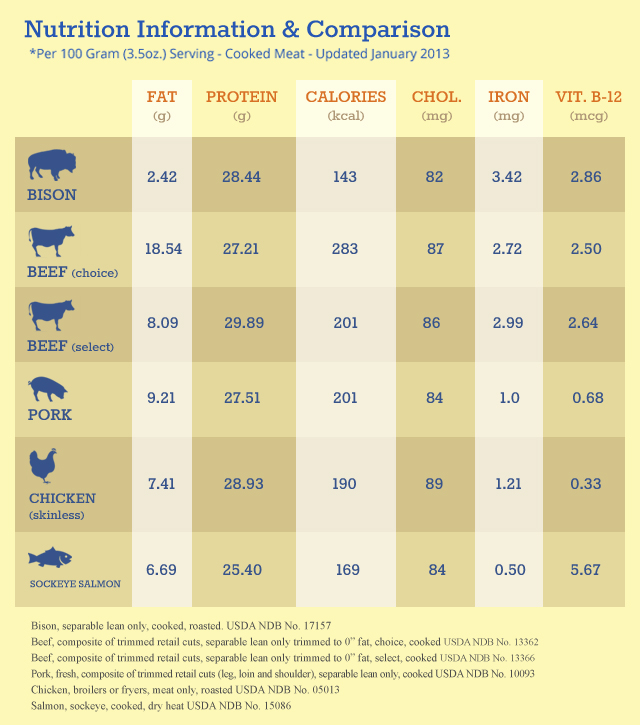Bridger Valley Buffalo Co.
I recently made a stop to the Bridger Valley Buffalo Company's ranch in Lyman, Wyoming. Rex Snyder, the owner, was gracious enough to spend a couple of minutes and discuss his company with us.
Bridger Valley Buffalo Company, partnered with Snyder Land, produce high quality buffalo meat. The company is a three generation, family owned company that started with three buffalo and has grown to a herd of 700. Snyder Land is responsible for the breeding and general management of the buffalo while Bridger Valley Buffalo Co. is over the sales of the buffalo product.
Included here is a few questions from my interview, conducted over the phone, with Mr. Snyder:
"Why did your family gravitate towards buffalo rather than beef cattle?"
We saw a lot of potential in buffalo meat sales and a buffalo ranch is not as common as cattle farming.
"What are the benefits of having your ranch here in Lyman, Wyoming?"
The buffalo are a hearty animal. They can withstand the weather and there's a lot of grass here.
"Do you prefer buffalo meat over beef?"
I enjoy buffalo meat. It has a lot of similarities with beef in how it tastes and how it is prepared. It's just slightly richer and more flavorful. We've also got a lot of great recipes on our website.
Mr. Snyder pointed me towards some interesting information provided on the companies website, including this nutrition table on the benefits of buffalo meat.

I was surprised to find that buffalo is so low in fat and higher than fish in Omega-3 fatty acids. Mr. Snyder also mentioned that buffalo meat is a great source of iron for those with an iron deficiency. Also, because of the class that buffalo meat falls under, it is illegal to give them any sort of growth hormone. The Bridger Valley Buffalo Co. follows strict FDA and USDA standards.
The website also provides useful contact information, a store link, as well as recipes and tips for cooking buffalo meat.
My discussion with Mr. Snyder made the images of the plantation owner come to mind. It is ironic to see that this man, who oversees the breeding and management of the actual herd of buffalo, has roles both relating to the yeoman farmer and the plantation owner. Following The Great Depression, I bet it would have been hard for those people to imagine that a man could be a laborer as well as a wealthy man who owns a farm or ranch.
"Folklore encompasses all the informally learned expressive culture that we have in our lives." -Farm: A Multimodal Reader. During my visit to Lyman, Wyoming, I also collected these image of farming (or better, ranching) folklore.
As you can see, if this was an image of a normal fence, what a pointless fence it would be. This is a popular site in Wyoming and is actual a snow fence. The purpose of a snow fence has nothing to do with maintaining or "keeping in" anything. (Hence the gaps.) This fence is meant to slow down the wind so that snow drifts do not accumulate on the roads. Given that Wyoming's lowest elevation is higher than the loftiest points of 17 other states (slate.com) it definitely receives a lot of snowfall. It is also the least densely populated state next to Alaska. It is pointless to have snow plows constantly clearing the roads that few travel on. These snow fences are the answer.
The second of the snow fence pictures is an older version of a snow fence. Wood was simply lined up like this, usually angled slightly, and spanned 50-100 yards before there was a gap. A lot of times the fences were staggered as well. The picture above this older fence is an example of a more modern look of snow fences.
"Bridger Valley Buffalo Company." Bridger Valley Buffalo Company. N.p., n.d. Web. 16 Aug. 2015.
Kinkead, Joyce, Funda, Evelyn, McNeill, Lynne S. "Farm: A Multimodal Reader" Revised Edition 2014. Fountainhead Press. Print.
Snyder, Rex. "Bridger Valley Buffalo Co." Telephone interview.
Vanhoenacker, Mark. "What Are Those Long Fences Along the Highway Out West?" Slate. Brow Beat, n.d. Web. 16 Aug. 2015




